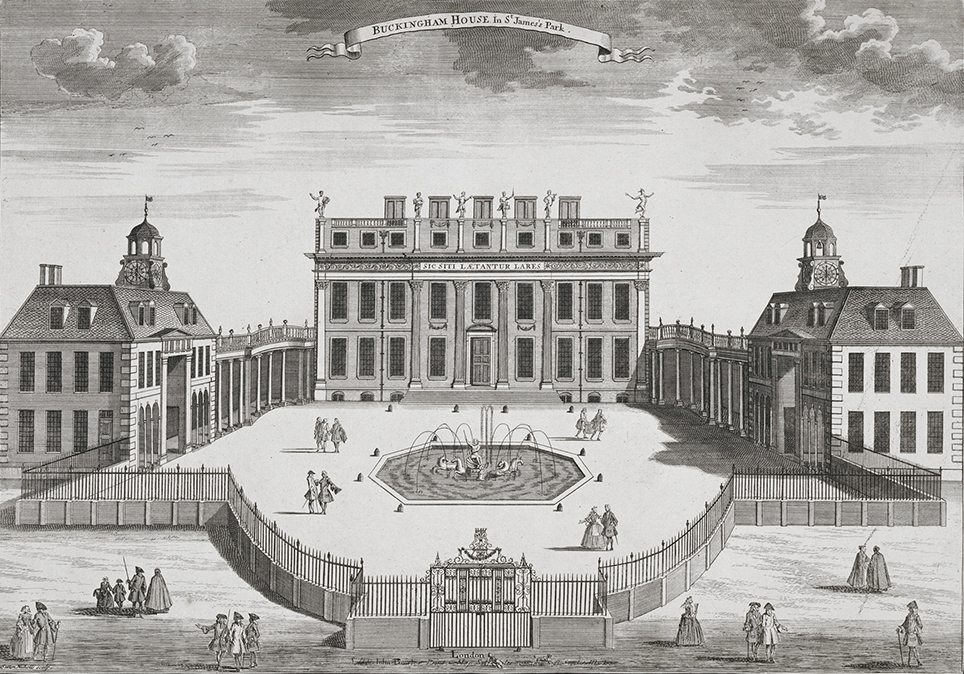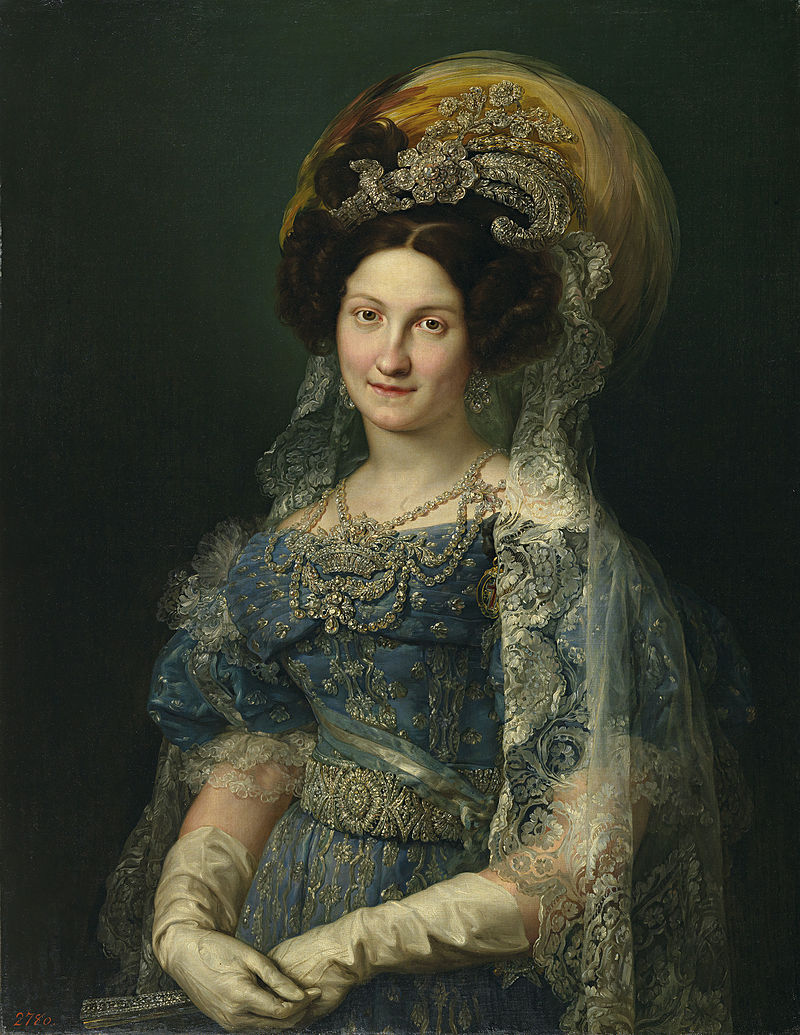© Unofficial Royalty 2024

Louis Mountbatten, 1st Earl Mountbatten of Burma; Credit – Wikipedia
August 27, 1487 – Birth of Anna of Brandenburg, first wife of the future King Frederik I of Denmark and Norway, in Berlin, Margraviate of Brandenburg, now in the German state of Brandenburg.
Anna died before her husband became King of Denmark and Norway but she was the mother of his heir. , Anna and Frederik, who was the Duke of Schleswig and Holstein at that time, lived at Gottorp Castle in the Duchy of Schleswig, now in Schleswig in the German state of Schleswig-Holstein. Anna often accompanied her husband on his travels and she was very popular with the people of the duchies of Schleswig and Holstein. Apparently having two children during her teenage years weakened Anna’s health. She contracted tuberculosis and died on May 3, 1514, aged 26, while six months pregnant.
Unofficial Royalty: Anna of Brandenburg, Duchess of Schleswig and Holstein
August 27, 1669 – Birth of Anne Marie d’Orléans, Queen of Sardinia, first wife of Vittorio Amedeo II, King of Sardinia, at the Château de Saint-Cloud in France
Anna Marie was the daughter of Philippe I, Duke of Orléans, the only sibling of Louis XIV, King of France, and Princess Henrietta of England, the youngest child of Charles I, King of England. In 1684, she married Vittorio Amedeo II, Duke of Savoy, the future King of Sardinia and the couple had six children. Anne Marie is an important link in the Jacobite succession to the thrones of England and Scotland, and now to the United Kingdom. In 1688, Anne Marie’s maternal uncle James II, King of England/James VII, King of Scots was deposed. After James II lost his throne, the Jacobite (from Jacobus, the Latin for James) movement formed. The goal of the Jacobites was to restore the Roman Catholic Stuart King James II of England/VII of Scotland and his Roman Catholic heirs to the thrones of England and Scotland. When the line of the deposed King James II of England died out the Jacobite claims to the British throne descended from the line of Henrietta of England, Duchess of Orléans, James II’s sister and Anne Marie’s mother. Since Anne Marie’s elder sister had died and had no children and her brother died in childhood, the Jacobite claims descended through Anne Marie.
Unofficial Royalty: Anne Marie d’Orléans, Queen of Sardinia
Unofficial Royalty: The Jacobite Succession – Pretenders to the British Throne
August 27, 1758 – Death of Bárbara of Portugal, Queen of Spain, wife of King Fernando VI of Spain, at Palacio Real de Aranjuez; buried at Salesas Reales Church (Santa Barbara) in Madrid, Spain
The daughter of João V, King of Portugal, Bárbara married King Fernando VI of Spain but the couple had no children except a stillborn son. Benevolent but weak, Fernando VI left the government mostly to others. Bárbara was the conduit through which the government ministers worked with Fernando VI. She was presented with all documents of state before they were given to Fernando VI because only she knew what should be said or hidden from him. Bárbara suffered from severe asthma for most of her life and became obese in the years before her death. Bárbara’s death at the age of 46, broke Fernando’s heart. During the last year of his reign, probably at least partially caused by his wife’s death, Fernando VI rapidly lost his mental capacity and was held at the Castle of Villaviciosa de Odón, near Madrid, where he died less than a year after Barbara’s death, on August 10, 1759, as the age of 45.
Unofficial Royalty: Bárbara of Portugal, Queen of Spain
August 27, 1789 – Birth of Joseph, Duke of Saxe-Altenburg in Hildburghausen, Duchy of Saxe-Hildburghausen, now in Thuringia, Germany
Joseph became Duke of Saxe-Altenburg upon his father’s death in 1834. As a ruler, Joseph was very conservative and against any sort of reform. With unrest spreading through Europe in 1848, Joseph quickly brought in troops to squash the growing demands for a free state in Altenburg. Despite his attempts, the people refused to back him and Joseph was forced to abdicate on November 30, 1848, just two days after the death of his wife. As he had no male heirs, he was succeeded by his younger brother Georg.
Unofficial Royalty: Joseph, Duke of Saxe-Altenburg
August 27, 1851 – Death of Prince Ferdinand of Saxe-Coburg and Gotha in Vienna, Austria; buried in the Ducal Mausoleum in the Glockenberg Cemetery in Coburg, Duchy of Saxe-Coburg and Gotha, now in Bavaria, Germany
Ferdinand was the uncle of both Queen Victoria and Prince Albert and founded the Koháry branch of the House of Saxe-Coburg and Gotha. He married Princess Maria Antonia Koháry de Csábrág et Szitnya, the daughter of Ferenc József, Prince Koháry de Csábrág et Szitnya and Countess Maria Antoinetta Josefa of Waldstein-Wartenburg. Although Ferdinand was Lutheran and Maria Antonia was Catholic. The couple married in the Catholic Church, with the condition that they would raise their children Catholic. The couple had four children including Ferdinand who married Queen Maria II of Portugal. Ferdinand’s wife was the sole heiress to her father’s vast fortune, which she inherited upon his death in 1826. At the time, Ferdinand converted to Catholicism.
Unofficial Royalty: Prince Ferdinand of Saxe-Coburg and Gotha
August 27, 1968 – Death of Princess Marina, Duchess of Kent at Kensington Palace in London, England; buried at Royal Burial Ground, Frogmore in Windsor, England
Princess Marina was the daughter of Prince Nicholas of Greece and Grand Duchess Helen Vladimirovna of Russia. She married Prince George, Duke of Kent, son of King George V, and was the last foreign princess to marry into the British royal family. The couple had three children, the first cousins of Queen Elizabeth II. In July 1968, Princess Marina spent several days in the hospital, where it was discovered that she was suffering from an inoperable brain tumor. Sadly, her condition diminished very quickly. At 11:40 am, on August 27, 1968, Princess Marina, Duchess of Kent passed away peacefully in her sleep at her home at Kensington Palace, surrounded by her children, and her sister Olga.
Unofficial Royalty: Princess Marina, Duchess of Kent
Unofficial Royalty: Tragedy in the British Royal Family at the End of August
August 27, 1979 – Assassination of Louis Mountbatten, 1st Earl Mountbatten of Burma, son of Prince Ludwig (Louis) of Battenberg (later 1st Marquess of Milford Haven) and Princess Victoria of Hesse and by Rhine and uncle of Prince Philip, Duke of Edinburgh, at Mullaghmore, County Sligo in the Republic of Ireland; buried at Romsey Abbey in England
Louis Mountbatten, 1st Earl Mountbatten of Burma, was a member of the extended British Royal Family and a distinguished Naval officer. A great-grandson of Queen Victoria, he was born a Prince of Battenberg but grew up fiercely British. In addition to his naval career, he also served as the last Viceroy and first Governor-General of India. Lord Mountbatten was killed on August 27, 1979, when his boat was blown up by the Provisional Irish Republican Army on Donegal Bay, in County Sligo, Ireland. He had been staying at his summer home, Classiebawn Castle, in County Sligo, Ireland, with much of his family. Mountbatten, his grandson Nicholas, his son-in-law’s mother, The Dowager Baroness Brabourne, and a young crew member, Paul Maxwell, all died as a result of the blast. Mountbatten’s daughter Patricia, her husband John, and their son Timothy were all critically injured but they survived.
Unofficial Royalty: Louis Mountbatten, 1st Earl Mountbatten of Burma
Unofficial Royalty: Tragedy in the British Royal Family at the End of August
This article is the intellectual property of Unofficial Royalty and is NOT TO BE COPIED, EDITED, OR POSTED IN ANY FORM ON ANOTHER WEBSITE under any circumstances. It is permissible to use a link that directs to Unofficial Royalty.






















